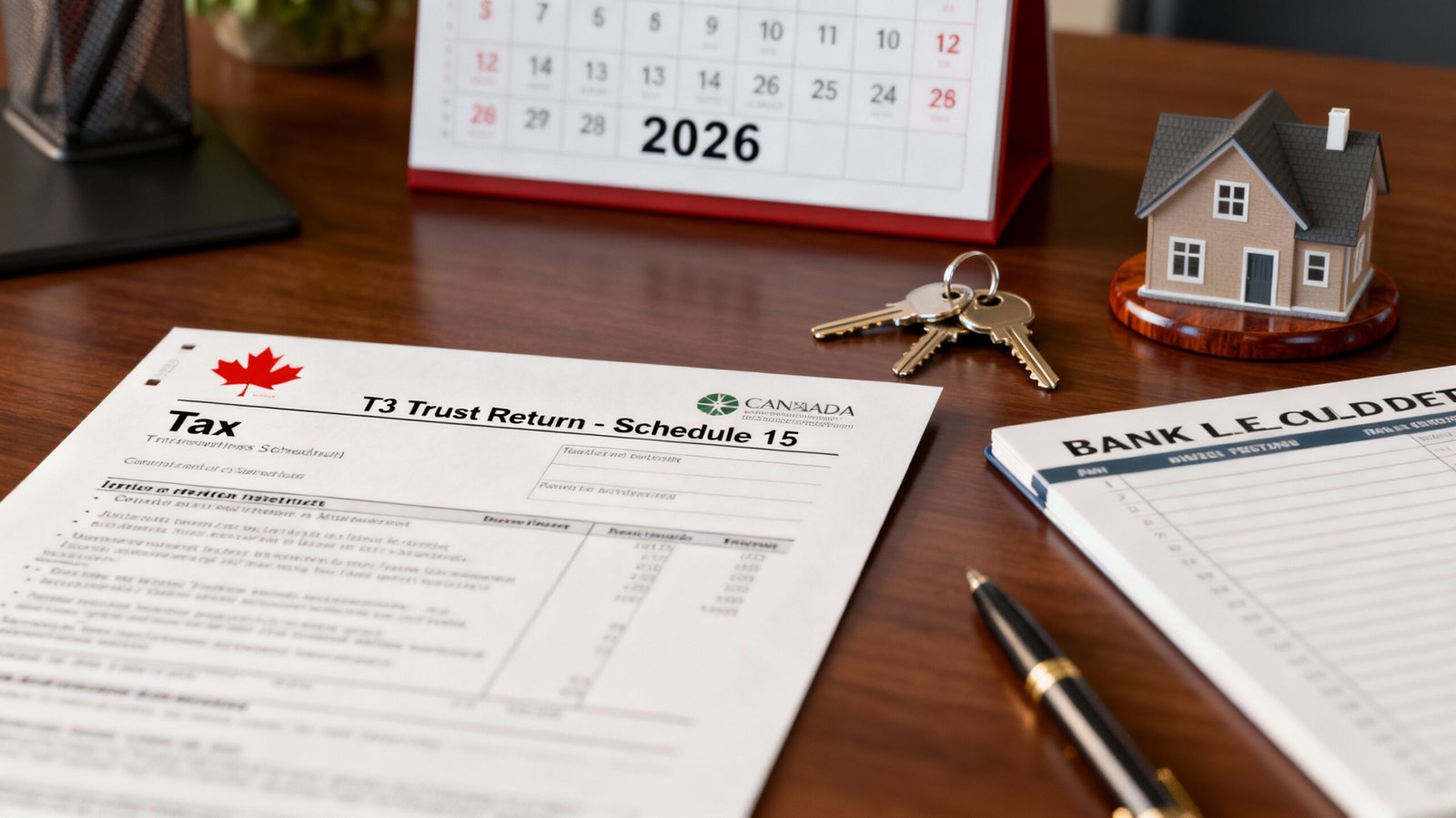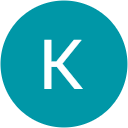Introduction: Understanding Canadian Taxation
Canada’s tax system is complex, multifaceted, and essential to funding public services across the nation. Whether you’re an individual filing your first personal tax return, a business owner navigating corporate taxes, or someone dealing with late or back taxes, understanding the Canadian tax landscape is crucial for compliance and financial success.
BOMCAS Canada is your trusted partner for all tax preparation and filing needs. As a leading accounting firm specializing in personal tax, corporate tax, GST/HST compliance, payroll remittances, and late/back tax filings, BOMCAS Canada ensures accuracy, maximizes your refunds and deductions, and provides peace of mind throughout the tax process. No matter how complex your tax situation, BOMCAS Canada is the best option to have your taxes done correctly.
This comprehensive manual covers everything you need to know about Canadian taxes, including:
- Personal income tax preparation and filing
- Corporate tax returns (T2)
- Late and back tax filings
- GST/HST registration, collection, and remittance
- Payroll taxes (CPP, EI, income tax)
- Understanding key tax forms (T4, T5, T2125, and more)
- Tax credits, deductions, and benefits
- How to use ProFile tax software
- Tax planning strategies
Keywords: Canadian tax filing, personal tax accountants, corporate tax services, tax return preparation, CRA tax compliance, GST HST remittance, payroll tax accountant, late tax filing help, T2 corporate tax return, tax preparation services Canada, how to file taxes in Canada, BOMCAS Canada accounting services
Part 1: Canadian Tax System Fundamentals
How Canadian Taxes Work
Canada operates a progressive tax system, meaning tax rates increase as income rises. Both federal and provincial/territorial governments levy income taxes, with rates varying by jurisdiction.
Key Tax Principles:
- Self-Assessment: Taxpayers are responsible for accurately reporting income and claiming eligible deductions
- Residency-Based Taxation: Canadian residents pay tax on worldwide income; non-residents only on Canadian-source income
- Tax Year: January 1 to December 31 for individuals
- Filing Deadlines: April 30 for most individuals; June 15 for self-employed (but payment due April 30)
- Progressive Rates: Federal rates range from 14.5% to 33%, with provincial rates layered on top
Federal Tax Brackets for 2025
The 2025 federal tax rates are structured as follows:
| Taxable Income | Federal Tax Rate |
|---|---|
| First $57,375 | 14.5% (reduced from 15%) |
| $57,375 to $114,750 | 20.5% |
| $114,750 to $177,882 | 26% |
| $177,882 to $253,414 | 29% |
| Over $253,414 | 33% |
Each province and territory adds its own tax rates, creating a combined marginal rate that can exceed 50% for high-income earners in some jurisdictions.
Types of Taxes in Canada
Income Taxes:
- Personal income tax (T1 returns)
- Corporate income tax (T2 returns)
- Trust income tax (T3 returns)
Consumption Taxes:
- GST (Goods and Services Tax): 5% federal
- HST (Harmonized Sales Tax): Combined federal/provincial in participating provinces
- PST (Provincial Sales Tax): In non-HST provinces
Payroll Taxes:
- Canada Pension Plan (CPP) contributions
- Employment Insurance (EI) premiums
- Federal and provincial income tax withholdings
Other Taxes:
- Capital gains tax
- Property tax
- Excise taxes
- Luxury tax on high-value items
BOMCAS Canada helps individuals and businesses navigate all these tax types, ensuring comprehensive compliance and optimal tax planning strategies.
Part 2: Personal Tax Preparation and Filing in Canada
Step 1: Determine If You Need to File
Most Canadian residents should file a tax return annually, even if no tax is owed. You must file if:
- You owe taxes
- The CRA sends a request to file
- You want to claim refundable credits or benefits
- You sold capital property
- You have self-employment income
Benefits of Filing:
- Receive tax refunds
- Qualify for GST/HST credits
- Access Canada Child Benefit (CCB)
- Build RRSP contribution room
- Maintain eligibility for other credits and benefits
Step 2: Gather Required Documents
Before starting your tax return, collect all necessary documentation:
Income Documents:
- T4 slips: Employment income, issued by employers by February 28
- T5 slips: Investment income (interest, dividends, capital gains)
- T4A slips: Pension income, scholarships, self-employment commissions
- T3 slips: Trust income distributions
- T2202 forms: Tuition fees from educational institutions
Deduction and Credit Documents:
- RRSP contribution receipts
- Medical expense receipts
- Charitable donation receipts
- Child care expense receipts (T778)
- Moving expense documentation
- Union dues receipts
- Student loan interest statements
Other Important Documents:
- Previous year’s Notice of Assessment (NOA)
- Records of capital gains/losses
- Rental income and expense records
- Business income/expense records (if self-employed)
BOMCAS Canada provides a comprehensive checklist and assists with document gathering to ensure nothing is missed, maximizing your refund potential.
Step 3: Understanding Key Personal Tax Forms
T1 General – Personal Income Tax Return
The T1 is your main personal tax return form. It reports all sources of income and claims all eligible deductions and credits.
T4 Slip – Statement of Remuneration Paid
Your T4 summarizes employment income for the year, including:
- Box 14: Employment income
- Box 16: Employee CPP contributions
- Box 17: Employee EI premiums
- Box 18: Employee RPP contributions
- Box 20: RPP contributions
- Box 22: Income tax deducted
- Box 44: Union dues
- Box 52: Pension adjustment
Employers must issue T4 slips by February 28 each year. Employees must report all T4 income on their tax returns.
T5 Slip – Statement of Investment Income
T5 slips report investment income exceeding $50 annually, including:
- Interest from savings accounts, GICs, bonds
- Eligible and non-eligible dividends
- Capital gains dividends
- Foreign income
Tax Treatment:
- Interest income: Fully taxable at your marginal rate
- Eligible dividends: Benefit from dividend tax credit (lower effective tax rate)
- Capital gains: Only 50% included in taxable income (as of 2025)
Quebec residents also receive Relevé 3 (RL-3) slips for provincial filing.
T2125 – Statement of Business or Professional Activities
Self-employed individuals, freelancers, contractors, and sole proprietors use the T2125 to report business or professional income and expenses:
Information Required:
- Business name and activity description
- Industry code
- Gross income from business operations
- Detailed business expenses
- GST/HST paid and collected
- Capital Cost Allowance (CCA) for depreciable assets
Common Deductible Expenses:
- Advertising and promotion
- Business insurance
- Office supplies and expenses
- Professional fees (legal, accounting)
- Rent for business premises
- Vehicle expenses (business portion)
- Utilities and telecommunications
- Home office expenses
- Meals and entertainment (50% deductible)
- Travel expenses
Filing Deadline: June 15 for self-employed individuals (but payment due April 30)
BOMCAS Canada specializes in T2125 preparation, ensuring all eligible expenses are claimed and income is properly reported for self-employed Canadians.
Step 4: Understanding Tax Credits and Deductions
Tax Deductions
Deductions reduce your taxable income before tax is calculated. Key deductions include:
RRSP Contributions:
- Deductible up to 18% of previous year’s earned income
- Maximum for 2025: $32,490
- Contributions made in first 60 days of 2025 can be claimed for 2024 taxes
- Unused contribution room carries forward indefinitely
Child Care Expenses:
- Up to $8,000 per child under 7 years old
- Up to $5,000 per child aged 7-16
- Up to $11,000 for children with disabilities
Moving Expenses: For work or business relocation (minimum 40 km closer)
Employment Expenses: If required to pay work-related costs (requires T2200 form from employer)
Tax Credits
Credits directly reduce the tax you owe. Canada offers refundable and non-refundable credits:
Non-Refundable Credits:
- Basic personal amount: $16,129 for 2025 (reduced for high earners)
- Spouse or common-law partner amount
- Canada caregiver amount
- Disability tax credit
- Medical expenses (exceeding 3% of net income)
- Charitable donations: 15% on first $200, 29% (or 33% for high earners) on excess
- Tuition and education amounts
- Home buyers’ amount ($10,000 credit for first-time buyers)
- Age amount (for seniors 65+)
Refundable Credits:
- GST/HST credit
- Canada Workers Benefit (CWB)
- Climate Action Incentive Payment
- Ontario Trillium Benefit (and other provincial credits)
BOMCAS Canada ensures you claim every eligible credit and deduction, maximizing your tax refund or minimizing taxes owed.
Step 5: Capital Gains and Investment Income
Capital Gains Tax
When you sell an asset (stocks, real estate, cryptocurrencies) for more than you paid, you realize a capital gain. In Canada:
- Current inclusion rate: 50% (as of 2025)
- Only half of capital gains are taxable
- Capital losses can offset capital gains
- Principal residence exemption: No tax on gains from selling your primary home
Important Note: The federal government proposed increasing the capital gains inclusion rate to 66.67% for individuals on gains above $250,000 annually, effective June 25, 2024, but this was deferred to January 1, 2026, and subsequently cancelled in March 2025. The inclusion rate remains 50% for all capital gains.
Dividend Income
Canadian dividends receive preferential tax treatment through the dividend tax credit
- Eligible dividends: From large Canadian corporations; receive enhanced dividend tax credit
- Non-eligible dividends: From small businesses; receive basic dividend tax credit
- Dividends are “grossed up” and then credited, resulting in lower effective tax rates than regular income
Step 6: Filing Your Return
Filing Methods
NETFILE (Online Filing):
- Fast, secure, and receives refunds quickly (typically within 2 weeks)
- Available from late February through April 30 (or June 15 for self-employed)
- Confirmation number provided immediately
- Requires CRA-certified tax software
Paper Filing:
- Mail completed return to designated CRA tax centre
- Include all supporting documents
- Slower refund processing (6-8 weeks)
Authorized Representatives:
- Tax professionals like BOMCAS Canada can file on your behalf
- EFILE service for faster processing
- Representatives must be registered with CRA
BOMCAS Canada uses ProFile professional tax software to prepare and electronically file your taxes, ensuring accuracy and speed.
Filing Deadlines 2025
- April 30, 2025: Deadline for most individuals to file and pay
- June 15, 2025: Filing deadline for self-employed individuals and their spouses (payment still due April 30)
- Late filing penalty: 5% of balance owing plus 1% per month (up to 12 months)
Step 7: After Filing – Notice of Assessment
Within 2-8 weeks of filing, the CRA issues a Notice of Assessment (NOA):
What’s Included:
- Confirmation of your filing
- Refund amount or balance owing
- RRSP deduction limit for next year
- TFSA contribution room
- Home Buyers’ Plan and Lifelong Learning Plan statements
- Explanation of any changes made by CRA
If You Disagree:
- You have 90 days from the NOA date to file a formal objection
- Submit online through CRA My Account or by mail using Form T400A
- Provide supporting documentation
- CRA will review and issue a Notice of Reassessment if your objection is accepted
BOMCAS Canada reviews all Notices of Assessment with clients and assists with objections if needed, ensuring your rights are protected.
Part 3: Corporate Tax Filing in Canada
Understanding Corporate Taxation
All corporations operating in Canada must file annual tax returns, even if no tax is owed. Corporate taxation differs significantly from personal taxation.
Types of Corporations
Canadian-Controlled Private Corporations (CCPCs):
- Most common type for small businesses
- Eligible for Small Business Deduction (SBD)
- Reduced tax rate on first $500,000 of active business income
Public Corporations:
- Shares traded publicly
- Subject to general corporate tax rates
Non-Resident Corporations:
- Only taxed on Canadian-source income
- Special filing requirements
T2 Corporate Income Tax Return
The T2 is the standard corporate tax return used by all Canadian corporations:
Key Components:
- Income Statement: Total revenue, cost of goods sold, gross profit, operating expenses, net income
- Balance Sheet: Assets, liabilities, shareholders’ equity
- Cash Flow Statement: Operating, investing, and financing activities
- Schedule 1: Net Income (Loss) for Income Tax Purposes
- Schedule 2: Charitable Donations
- Schedule 3: Shareholder Information
- Schedule 4: Corporation Losses
- Schedule 8: Capital Cost Allowance (CCA)
- Schedule 100: Balance Sheet Information
- Schedule 125: Income Statement Information
Small Business Deduction (SBD)
The SBD is one of the most valuable tax benefits for Canadian small businesses:
Benefits:
- Federal tax rate of 9% on first $500,000 of active business income (vs. 15% general rate)
- Combined federal-provincial rate typically 11-15% (varies by province)
- Significant tax savings: approximately $30,000 annually on $500,000 of income
Eligibility Requirements:
- Must be a CCPC throughout the tax year
- Income must be from active business (not passive investment income)
- Not disqualified due to excessive passive income or taxable capital
Phase-Outs:
- Passive income between $50,000-$150,000: Reduces SBD limit
- Taxable capital between $10 million-$50 million: Reduces SBD limit (expanded in 2022)
BOMCAS Canada maximizes the Small Business Deduction for eligible corporations, ensuring you retain more after-tax income to reinvest in growth.
Corporate Filing Requirements
Electronic Filing Mandate
As of tax years beginning after 2023, all corporations must file electronically, except:
- Insurance corporations
- Non-resident corporations
- Corporations reporting in functional currency
- Corporations exempt from tax under section 149 of the Income Tax Act
Penalty for non-compliance: $1,000 for failure to file electronically when required
Filing Deadlines
Corporations must file within 6 months of fiscal year-end:
- Example: December 31 year-end → file by June 30
- Example: May 31 year-end → file by November 30
Payment Deadlines:
- CCPCs eligible for SBD: 3 months after year-end
- All other corporations: 2 months after year-end
T2 Short Return
Eligible corporations can use the simplified 2-page T2 Short Return instead of the full 9-page T2:
Eligibility:
- Established in only one province/territory
- Not claiming refundable tax credits
- No taxable dividends paid or received
- Reporting in Canadian dollars
- No Ontario transitional tax debit
- No section 34.2 calculations
GST/HST and Corporate Returns
Most businesses must register for GST/HST if taxable revenues exceed $30,000 annually:
Registration Process:
- Obtain Business Number (BN) from CRA
- Register for GST/HST account online, by phone, or by mail
- Receive GST/HST account number linked to BN
- Begin charging GST/HST on taxable supplies
- File returns and remit collected taxes
Filing Frequencies:
- Annual: Revenue under $1.5 million
- Quarterly: Revenue $1.5 million to $6 million
- Monthly: Revenue over $6 million
Input Tax Credits (ITCs):
- Claim GST/HST paid on business expenses
- Reduces net tax remittance
- Must have proper documentation (receipts, invoices)
BOMCAS Canada handles all aspects of GST/HST compliance, from registration to filing and remittance, ensuring your business stays compliant and maximizes ITCs.
Payroll Obligations for Corporations
Employers must withhold and remit payroll deductions for employees:
Canada Pension Plan (CPP) Contributions
2025 Rates:
- Employee contribution rate: 5.95% (base CPP)
- Employer contribution rate: 5.95% (base CPP)
- Additional CPP2: 1.00% each for employee and employer
- Maximum pensionable earnings: $71,300
- Basic exemption: $3,500
- Maximum employee contribution: $4,034.10 (base + additional)
- Maximum employer contribution: $4,034.10 (base + additional)
Self-Employed: Pay both employee and employer portions (11.9% total)
Employment Insurance (EI) Premiums
2025 Rates:
- Employee premium rate: 1.64%
- Employer premium rate: 2.296% (1.4 times employee rate)
- Maximum insurable earnings: $65,700
- Maximum employee premium: $1,077.48
- Maximum employer premium: $1,508.47
Income Tax Withholding
Employers must deduct federal and provincial income tax based on employee earnings and TD1 forms.
T4 Slip Preparation and Filing
Employers must:
- Issue T4 slips to all employees by February 28
- File T4 Summary with CRA
- Report all employment income, deductions, and taxable benefits
- Penalties for late or incorrect T4s: Up to $2,500 per slip
BOMCAS Canada provides complete payroll services, including CPP/EI calculations, tax withholdings, T4 preparation, and timely remittances, freeing business owners to focus on operations.
Using ProFile Tax Software
Intuit ProFile is the leading professional tax preparation software in Canada, used by BOMCAS Canada and thousands of tax professionals:
Key Features:
T2 Corporate Module:
- Comprehensive T2 return preparation
- Built-in auditor with 2,800+ diagnostic checks
- Real-time error highlighting
- Electronic filing (EFILE) directly to CRA
- Document attachment capability
- Cloud backup
- 5-year tax summary
- Carryforward functionality
T1 Personal Module:
- Complete T1 return preparation
- CRA Auto-fill My Return integration
- ReFILE for amendments
- Express Notice of Assessment
- Pre-authorized debits
- Batch processing for multiple returns
- Variance analysis
FX Module (T4/T5 and other forms):
- Unlimited T4, T4A, T5 preparation and filing
- GST/HST forms
- Integration with T1 and T2 data
- Historical access (10+ years)
Advantages:
- CRA-approved and compliant
- Flexible licensing (install on multiple computers)
- Comprehensive form sets for all provinces/territories
- Free year-round technical support
- 100% accuracy guarantee
BOMCAS Canada leverages ProFile’s powerful capabilities to deliver fast, accurate, and error-free tax returns for all clients.
Part 4: Filing Late and Back Taxes in Canada
Understanding Late and Back Taxes
Life happens—sometimes tax returns are missed. Whether due to financial hardship, personal circumstances, or simple oversight, many Canadians have unfiled tax returns. Filing late or back taxes is essential to avoid serious consequences.
Consequences of Not Filing
Immediate Penalties:
First-Time Late Filing:
- 5% of balance owing immediately
- Additional 1% per month for up to 12 months
- Maximum penalty: 17% of balance owing
Repeat Late Filer (penalized in past 3 years):
- 10% of balance owing immediately
- Additional 2% per month for up to 20 months
- Maximum penalty: 50% of balance owing
Interest Charges:
- Compound daily interest on unpaid balances
- Starts accruing the day after the filing deadline
- Interest charged on penalties as well
- Current prescribed interest rates vary (typically 5-10%)
Other Consequences:
- Loss of GST/HST credits
- Loss of Canada Child Benefit (CCB)
- Loss of other benefit payments
- CRA may withhold refunds from other years
- Potential wage garnishment
- Bank account freezes
- Property liens
- Legal action and collections
- Damaged credit rating
- Stress and anxiety
How to File Back Taxes
Step 1: Gather Historical Documents
Collect all income slips and receipts for each unfiled year:
- T4, T5, T4A, T3 slips
- RRSP contribution receipts
- Medical expenses
- Charitable donations
- Business records (if self-employed)
Can’t Find Documents?
- Access CRA My Account for tax slip information
- Request wage statements from previous employers
- Review bank statements for RRSP contributions
- Contact investment institutions for T5s
BOMCAS Canada can help reconstruct missing records and retrieve information from CRA on your behalf.
Step 2: Choose Filing Method
Recent Years (within 10 years):
- Use NETFILE for returns up to current year minus 10 years
- Use REFILE to amend previously filed returns
Older Years:
- Must file paper returns
- Mail to designated CRA tax centre
- Include all supporting documents
Step 3: File Promptly
Order of Filing:
- File all years in chronological order (oldest to newest)
- Each year affects the next (carryforwards, credits, etc.)
What to Expect:
- CRA will process returns
- Penalties and interest will be calculated
- You’ll receive Notices of Assessment for each year
- Payment arrangements can be negotiated
Step 4: Address Penalties and Interest
Taxpayer Relief Program:
The CRA has discretion to cancel or waive penalties and interest in certain circumstances:
- Extraordinary circumstances (natural disasters, serious illness, accidents)
- Actions of the CRA (incorrect information, processing delays)
- Inability to pay due to financial hardship
How to Apply:
- Submit Form RC4288 (Request for Taxpayer Relief)
- Provide detailed explanation and supporting documents
- CRA typically reviews requests within 180 days
- Relief can apply to any tax year within 10 years
BOMCAS Canada assists with taxpayer relief applications, negotiating with CRA on your behalf to minimize or eliminate penalties and interest.
Payment Arrangements
If you can’t pay the full amount immediately, the CRA offers payment plans:
Setting Up a Payment Arrangement:
- File all outstanding returns – CRA is more willing to negotiate if you’re current with filings
- Calculate affordable payment – Use CRA’s payment arrangement calculator in My Account
- Contact CRA – Call 1-888-863-8657 or use automated TeleArrangement service (1-866-256-1147)
- Make first payment – Start paying according to agreed schedule
- Stay compliant – Continue making payments and filing future returns on time
Payment Options:
- Pre-authorized debit (PAD) – automatic withdrawals
- Online banking
- Credit card (third-party service fees apply)
- In-person at financial institutions
Important Notes:
- Interest continues to accrue on unpaid balance
- CRA may still withhold benefit payments and apply to debt
- Missing scheduled payments can trigger legal action
- Arrangements can be modified if financial situation changes
BOMCAS Canada helps clients navigate payment arrangements, ensuring manageable plans that fit your budget while maintaining CRA compliance.
Corporate Late Filing
Corporate Late Filing Penalties:
Failure to File:
- $100 to $2,500 depending on corporation size and delay
- Additional penalties for taxable capital employed in Canada
- Part VI tax calculations
Non-Resident Corporations:
- Greater of $100 or $25 per day late (maximum 100 days)
Electronic Filing Non-Compliance:
- $1,000 penalty if required to file electronically but didn’t
BOMCAS Canada specializes in bringing corporations current with all outstanding T2 filings, minimizing penalties and negotiating with CRA.
Part 5: GST/HST In-Depth Guide
Understanding GST/HST
Goods and Services Tax (GST): 5% federal consumption tax on most goods and services
Harmonized Sales Tax (HST): Combined federal and provincial sales tax in participating provinces:
HST Provinces and Rates (2025):
- Ontario: 13%
- Nova Scotia: 15%
- New Brunswick: 15%
- Newfoundland and Labrador: 15%
- Prince Edward Island: 15%
GST-Only Provinces: 5% (Alberta, British Columbia, Saskatchewan, Manitoba)
PST Provinces: Separate provincial sales tax (Quebec, British Columbia, Saskatchewan, Manitoba)
Registration Requirements
Mandatory Registration:
- Taxable sales exceed $30,000 in any single calendar quarter or over four consecutive quarters
- Applies to revenue from all locations (Canada and international sales delivered to Canada)
Voluntary Registration:
- Can register even if under $30,000 threshold
- Allows claiming Input Tax Credits (ITCs)
- Useful for startups expecting to exceed threshold
Exempt Activities (not required to register):
- Residential rent
- Most health and medical services
- Educational services
- Certain financial services
- Sales of used residential property
How to Register for GST/HST
Step 1: Obtain Business Number (BN):
- Apply online via CRA Business Registration Online
- Call CRA Business Enquiries line
- Submit Form RC1 by mail
Step 2: Register for GST/HST Account:
- Online through CRA portal (fastest method)
- By phone
- Mail Form RC1
Step 3: Choose Reporting Period:
- Annual (under $1.5 million revenue)
- Quarterly ($1.5 million to $6 million)
- Monthly (over $6 million)
Step 4: Receive GST/HST Number:
- Linked to your Business Number
- Must be displayed on invoices for taxable supplies over $30
BOMCAS Canada handles the entire GST/HST registration process, ensuring proper setup and compliance from day one.
Collecting GST/HST
What to Charge:
- Determine place of supply (where goods/services delivered)
- Charge appropriate rate based on customer’s province
- Issue proper tax invoices
Tax Invoice Requirements (sales over $30):
- Business name and GST/HST number
- Customer name
- Date and invoice number
- Description of goods/services
- Amount before tax
- GST/HST rate and amount
Claiming Input Tax Credits (ITCs)
ITCs allow you to recover GST/HST paid on business expenses:
Eligible Expenses:
- Inventory and raw materials
- Office supplies and equipment
- Professional services
- Business travel
- Vehicle expenses (business portion)
- Advertising and marketing
- Rent and utilities (business portion)
Documentation Required:
- Original receipts and invoices
- Supplier’s business name and GST/HST number
- Description of purchase
- GST/HST amount paid
Restrictions:
- 50% limit on meals and entertainment
- No ITC for personal use portion
- Zero-rated and exempt purchases don’t generate ITCs
Filing and Remitting GST/HST
Filing Methods:
- Online through My Business Account
- NETFILE for business
- Paper filing (Form GST34 or GST62)
Remittance Methods:
- Online banking
- Pre-authorized debit
- Credit card (service fees apply)
- In-person at financial institution
- Mail with remittance voucher
Filing Deadlines:
- Annual filers: Three months after fiscal year-end
- Quarterly filers: One month after quarter-end
- Monthly filers: One month after month-end
Late Filing Penalties:
- Formula: 1% of amount owing + (0.25% × amount owing × number of months late)
- Maximum 12 months
- Interest on unpaid amounts
BOMCAS Canada ensures timely GST/HST filing and remittance, maximizing ITCs and avoiding penalties.
Part 6: Payroll Taxes and T4 Preparation
Employer Payroll Obligations
Every employer in Canada must withhold and remit three types of payroll deductions:
- Canada Pension Plan (CPP) contributions
- Employment Insurance (EI) premiums
- Federal and provincial income tax
CPP Contributions
2025 Rates and Limits:
Base CPP:
- Contribution rate: 5.95% (employee and employer each)
- Maximum pensionable earnings: $71,300
- Basic exemption: $3,500
- Maximum contributory earnings: $67,800
- Maximum contribution: $3,356.10 (each)
Additional CPP (CPP2):
- Contribution rate: 1.00% (employee and employer each)
- Maximum additional contribution: $678.00 (each)
- Total maximum CPP contribution: $4,034.10 (each)
Self-Employed:
- Pay both employee and employer portions
- Total rate: 11.9%
- Maximum contribution: $8,068.20
When to Stop Deducting:
- Employee reaches maximum contribution for the year
- Employee turns 70
- Employee is 65-70 and files Form CPT30 to stop contributing
EI Premiums
2025 Rates and Limits:
- Employee premium rate: 1.64%
- Employer premium rate: 2.296% (1.4 × employee rate)
- Maximum insurable earnings: $65,700
- Maximum employee premium: $1,077.48
- Maximum employer premium: $1,508.47
Quebec: Different rates apply due to Quebec Parental Insurance Plan (QPIP)
When to Stop Deducting:
- Employee reaches maximum premium for the year
Income Tax Withholding
Determining Withholding Amount:
- Employee completes federal and provincial TD1 forms (Personal Tax Credits Return)
- Use CRA payroll deduction tables or Payroll Deductions Online Calculator (PDOC)
- Calculate based on:
- Pay period (weekly, bi-weekly, monthly, etc.)
- Gross pay
- Claim code from TD1
- Province of employment
Special Situations:
- Bonuses: Higher withholding rate
- Commissions: Use cumulative averaging method
- Taxable benefits: Include in withholding calculations
Remitting Payroll Deductions
Remittance Schedules:
Quarterly Remitter:
- Average monthly withholding (AMWA) less than $1,000
- Remit by 15th of month following quarter-end
Regular Remitter:
- AMWA between $1,000 and $24,999.99
- Remit by 15th of following month
Accelerated Remitter – Threshold 1:
- AMWA between $25,000 and $99,999.99
- Remit within 3 business days after period end
Accelerated Remitter – Threshold 2:
- AMWA $100,000 or more
- Remit within 1 business day
Penalties for Late Remittance:
- 3% if 1-3 days late
- 5% if 4-5 days late
- 7% if 6-7 days late
- 10% if more than 7 days late or no payment made
T4 Slip Preparation
Requirements:
Issue T4 slips if you:
- Deducted CPP, EI, or income tax from employee pay
- Paid employee more than $500 annually
T4 Deadline: February 28 following the tax year
T4 Information:
- Employee name, address, SIN
- Employer name, address, business number
- Employment income (Box 14)
- CPP contributions (Box 16)
- EI premiums (Box 18)
- Income tax deducted (Box 22)
- Pensionable and insurable earnings
- Employment code
- Province of employment
Filing T4 Summary:
- Submit T4 Summary (total of all employee T4s) to CRA
- File electronically if 50+ employees
- Include total remuneration, CPP, EI, and tax withheld
Penalties:
- Late filing: $100 to $2,500 per slip
- Incorrect information: $100 to $2,500 per slip
BOMCAS Canada provides comprehensive payroll services, including all calculations, remittances, T4 preparation, and filing, ensuring full compliance and accuracy.
Part 7: Tax Planning Strategies
For Individuals
Maximize RRSP Contributions:
- Contribute up to 18% of earned income (max $32,490 for 2025)
- Reduce taxable income and defer tax until retirement
- Contributions in first 60 days of year can be claimed for previous year
Utilize TFSAs:
- Contributions not deductible but growth is tax-free
- 2025 annual limit: $7,000
- Withdrawals don’t affect benefits or tax credits
- Ideal for emergency funds and flexible savings
Income Splitting Strategies:
- Contribute to spouse’s RRSP
- Pension income splitting (age 65+)
- Family trusts (with professional advice)
- Prescribed rate loans to family members
Claim All Eligible Credits and Deductions:
- Medical expenses
- Charitable donations (increased credit for amounts over $200)
- Child care expenses
- Tuition and education
- Home office expenses (if eligible)
- Moving expenses
- Carrying charges (investment fees)
Tax-Loss Selling:
- Sell investments with capital losses to offset gains
- Losses can be carried back 3 years or forward indefinitely
- Beware of superficial loss rules (30-day repurchase restriction)
Timing Income and Deductions:
- Defer income to lower tax years
- Accelerate deductions into higher income years
- Plan RRSP withdrawals strategically in retirement
For Businesses
Maximize Small Business Deduction:
- Keep active business income under $500,000 threshold for reduced rate
- Plan income distribution between salary and dividends
- Monitor passive income (above $50,000 reduces SBD)
Claim All Eligible Business Expenses:
- Office supplies and equipment
- Professional fees
- Advertising and marketing
- Vehicle expenses
- Meals and entertainment (50%)
- Travel
- Employee salaries and benefits
- Insurance
- Rent or mortgage interest
- Utilities
Home Office Deduction:
Eligibility:
- Home office is principal place of business, OR
- Used exclusively for business and regularly to meet clients
Deductible Expenses:
- Rent or mortgage interest
- Property tax
- Home insurance
- Utilities (heat, electricity, water)
- Maintenance and repairs
- Cleaning
- Internet and phone (business portion)
Calculation:
- Measure office square footage
- Divide by total home square footage
- Apply percentage to eligible expenses
- Example: 200 sq ft office in 1,000 sq ft home = 20% of expenses deductible
Restrictions:
- Cannot create or increase business loss
- Unused amount carries forward
Capital Cost Allowance (CCA):
- Deduct depreciation on business assets
- Vehicles, equipment, buildings, furniture
- Different classes have different rates
- Accelerated Investment Incentive (100% first-year deduction for certain assets)
Timing Asset Purchases:
- Purchase before year-end to claim CCA for the year
- Consider half-year rule (50% CCA in acquisition year)
Year-End Tax Planning:
- Defer income to next year if appropriate
- Accelerate expenses into current year
- Pay bonuses before year-end
- Review inventory valuation methods
BOMCAS Canada provides strategic tax planning services for individuals and businesses, identifying opportunities to minimize tax and maximize wealth.
Part 8: CRA Audits and Compliance
What is a CRA Audit?
A CRA audit is a formal examination of your tax return, books, and records to verify accuracy and compliance.
Types of Audits
Desk Audit:
- Conducted by mail or phone
- CRA requests specific documents
- Focused on particular items or discrepancies
- Less comprehensive
Field Audit:
- Auditor visits business, home, or accountant’s office
- More detailed examination
- Reviews extensive records
- May include interviews
GST/HST Audit:
- Focuses on sales tax collection, remittance, and ITCs
- Common for businesses with large refunds
Payroll Audit:
- Verifies proper T-slip reporting and remittances
- Checks employee vs. contractor classification
Audit Triggers
Common Red Flags:
- Repeated business losses
- High or unusual deductions
- Large charitable donations
- Significant vehicle or home office expenses
- Cash-intensive businesses
- T-slip mismatches
- Unreported income
- Large GST/HST refund claims
- Offshore income or assets
- Previous audit issues
- Informant tips
Audit Process
Step 1: Notice of Audit:
- CRA sends written notice or calls
- Specifies scope and years under review
Step 2: Prepare Documentation:
- Gather all requested records
- Invoices, receipts, bank statements
- Ledgers, journals, contracts
- Payroll records
- T-slips and tax returns
Step 3: Review and Examination:
- Submit documents (online via secure portal, never email)
- Auditor reviews and may request additional information
- Field audit includes site visit
Step 4: Findings:
- No changes: Audit closed
- Reassessment: Additional tax, penalties, interest
- Refund: Overpayment discovered (rare)
Audit Rights and Responsibilities
Your Rights:
- Professional representation (BOMCAS Canada can represent you)
- Ask questions and request clarification
- Provide explanations
- Object to reassessment (90 days)
Your Responsibilities:
- Respond promptly to CRA requests
- Provide complete and accurate information
- Maintain records for 6 years
- Cooperate respectfully
Notice of Objection
If you disagree with a reassessment:
Deadline: 90 days from Notice of Assessment/Reassessment date
How to File:
- Online through My Account or Represent a Client
- Mail Form T400A
- Send letter to Chief of Appeals
What to Include:
- Facts and reasons for disagreement
- Supporting documentation
- Specific issues being contested
Process:
- CRA reviews objection
- May request additional information
- Issues Notice of Confirmation or Reassessment
- If still disagree, can appeal to Tax Court of Canada
BOMCAS Canada provides expert representation during CRA audits and handles objections, protecting your interests throughout the process.
Part 9: Tax Installment Payments
What are Tax Installments?
Tax installments are advance payments toward your annual tax bill, made quarterly throughout the year.
Who Must Pay Installments?
Individuals:
Pay installments if net tax owing exceeds:
- $3,000 (outside Quebec) for current year AND either of two previous years
- $1,800 (Quebec residents)
Common Situations:
- Self-employed individuals
- Rental income earners
- Investment income recipients
- Pensioners with insufficient withholding
- Anyone without enough tax deducted at source
Corporations:
- All corporations with tax owing over $3,000 in previous year
- Most corporations: monthly installments
- Eligible CCPCs: quarterly installments
Individual Installment Deadlines
Quarterly Due Dates:
- March 15
- June 15
- September 15
- December 15
Farmers and Fishers: One payment by December 31
Calculation Methods
Option 1: No-Calculation:
- Pay amounts shown on CRA installment reminders
- CRA calculates based on previous years
Option 2: Prior-Year:
- Calculate based on previous year’s net tax owing
- 25% each quarter
Option 3: Current-Year:
- Estimate current year’s tax owing
- 25% each quarter
- Risk of penalty if estimate too low
Best Practice: Use the method that results in the lowest payment while avoiding penalties
Corporate Installments
Monthly Installments (most corporations):
- Due last day of each month
- First payment: one month after fiscal year-start
Quarterly Installments (eligible CCPCs):
Eligibility:
- Canadian-controlled private corporation
- Claims small business deduction
- Taxable income under $500,000
- Taxable capital under $10 million
- Perfect compliance history
Due Dates:
- March 15, June 15, September 15, December 15
- Final balance: 3 months after year-end (CCPCs) or 2 months (others)
Penalties and Interest
Installment Interest:
- Charged if installments late or insufficient
- Calculated on the difference between required and paid amounts
- Penalty only if installment interest exceeds $1,000
Avoiding Penalties:
- Pay on time
- Use one of the three calculation methods
- Set up pre-authorized debits for automatic payments
BOMCAS Canada calculates and manages tax installments for clients, ensuring timely payments and avoiding penalties.
Part 10: Advanced Topics
RESPs – Registered Education Savings Plans
How RESPs Work:
- Tax-sheltered savings for children’s post-secondary education
- Contributions not tax-deductible
- Investment growth tax-free while in RESP
- Government grants boost savings
Canada Education Savings Grant (CESG):
- 20% match on contributions
- Maximum $500 annually
- Lifetime maximum $7,200 per child
Contribution Limits:
- No annual limit
- Lifetime limit: $50,000 per beneficiary
- Over-contributions taxed at 1% per month
Withdrawals:
- Contributions withdrawn tax-free anytime
- Educational Assistance Payments (EAPs) – grants and growth – taxed in student’s hands
- Student typically in low tax bracket, pays little to no tax
Tax Credits for Seniors
Age Amount:
- Available at age 65+
- $8,790 federal credit (15% = $1,318.50)
- Reduced for net income over $45,522
Pension Income Amount:
- $2,000 credit for eligible pension income
- Includes RRIF withdrawals, annuities, employer pensions
- Age 65+: RRIFs qualify
- Under 65: Only employer pensions qualify
Pension Income Splitting:
- Share up to 50% of eligible pension income with spouse
- Reduces family tax burden
- Available age 65+
Charitable Donations
2024/2025 Extension:
- Donations made by February 28, 2025 can be claimed on 2024 or 2025 returns
- Extension due to Canada Post strike
Tax Credit Rates:
- First $200: 15% federal + provincial
- Over $200: 29% federal (or 33% if in top bracket) + provincial
- Combined federal-provincial: up to 49%
Carry-Forward:
- Unused donations can be carried forward 5 years
- Strategic timing to maximize benefit
Moving Forward: Why Choose BOMCAS Canada
Throughout this comprehensive guide, we’ve covered every aspect of Canadian taxation:
✓ Personal tax preparation and filing
✓ Corporate T2 returns and compliance
✓ Late and back taxes with penalty relief
✓ GST/HST registration and remittance
✓ Payroll taxes and T4 preparation
✓ Tax credits, deductions, and planning
✓ CRA audits and objections
✓ Tax installments
The complexity of Canadian taxes demands expertise, precision, and dedication.
BOMCAS Canada provides:
- Accuracy: Using professional ProFile software with built-in error checking
- Compliance: Staying current with all CRA rules and deadlines
- Maximization: Claiming every eligible deduction and credit
- Peace of Mind: Handling audits, objections, and CRA communications
- Strategic Planning: Minimizing tax and building wealth
- Year-Round Support: Available whenever you need assistance
Whether you’re filing personal taxes, managing corporate obligations, dealing with back taxes, or navigating payroll compliance, BOMCAS Canada is your best choice for expert, reliable, and comprehensive tax services.
Don’t navigate the complex Canadian tax system alone. Contact BOMCAS Canada today and experience the difference professional tax preparation makes.
Conclusion
Canadian taxation encompasses personal income tax, corporate income tax, GST/HST, payroll obligations, and various credits, deductions, and compliance requirements. Understanding these components is essential for financial success and legal compliance. This guide has provided comprehensive, detailed information on every major aspect of Canadian taxes.
Key Takeaways:
- File on time to avoid penalties and interest
- Keep thorough records for at least 6 years
- Claim all eligible deductions and credits to minimize tax
- Use professional software like ProFile for accuracy
- Seek expert help for complex situations
- Plan strategically to optimize tax outcomes
- Stay compliant with all CRA requirements
BOMCAS Canada stands ready to assist with every tax need, from basic personal returns to complex corporate filings, late tax resolutions, payroll services, and strategic tax planning. With expertise in ProFile software, deep knowledge of CRA requirements, and commitment to client success, BOMCAS Canada ensures your taxes are done correctly, completely, and to your maximum advantage.
Contact BOMCAS Canada today for a consultation and discover how professional tax services can save you money, reduce stress, and provide peace of mind throughout the year and for years to come.










 View Our Location
View Our Location





 181 Meadowview Bay, Sherwood Park, AB T8H 1P7, Canada (Online Clients Only)
181 Meadowview Bay, Sherwood Park, AB T8H 1P7, Canada (Online Clients Only)